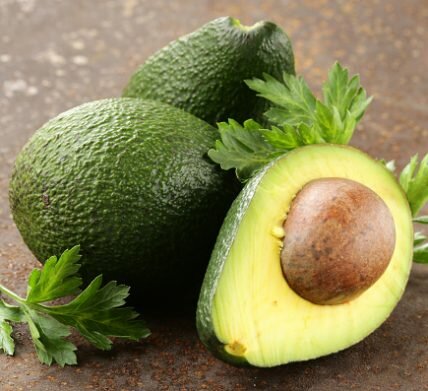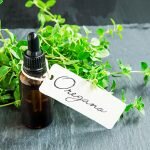Fuel Your Body With These Six Real Health Foods
Packaged health foods are fuelling epidemics of disease. They are results of industry experiments with food chemistry. Creative marketing strategies hope to trick you into believing you are making good dietary choices. Don’t be fooled. Eat a diet similar to our stone-age ancestors, and you’ll avoid most modern diseases.
Cave men ate what they could hunt or gather. Their archeological record, combined with studies of modern hunters, shows virtually no heart disease, diabetes, osteoarthritis, or obesity. To enjoy this native good health in our day and age, start by eating what they ate whole foods.
The six whole foods listed in this article promote health and wellness. Natural meats and eggs, true vegetables, unmodified fruits, and real nuts will ward off or even cure the chronic diseases created by our modern environment. These are the real health foods. And you can buy these naturally occurring foods at any supermarket.
Why Cave Men Either Died Young or Grew Into Healthy Elders
Man ate only whole foods for millennia. Factory-produced foods have only recently become a staple. Food additives like aspartame, high fructose corn syrup, and hydrogenated vegetable oils are in almost all packaged supposed health foods. Heart disease, diabetes, and obesity have coincided with these dietary changes. Prior to the agricultural revolution, these chronic diseases were rare.
There are remote populations today that still adhere to a hunter-gatherer diet. In these populations, the elderly people are generally free of the chronic diseases (obesity, high blood pressure, heart disease) that almost universally afflict the elderly in modern societies.
When these people adopt Western diets, their health declines and they begin to exhibit the same signs and symptoms of the diseases in our civilisation today. Your body is an amazing, adaptable machine, but straying too far from your natural diet makes your health suffer.
Many people question the wisdom of the cave man diet because cave men didn’t live as long as most people do today. But understand that trauma, predation, and infection caused most early deaths in hunter-gatherer societies. If an individual was fortunate to avoid these dangers for as long as he lived, he was free of the chronic degenerative diseases that afflict modern societies.
Surprising to most of my patients, cave men ate more protein and fat than we do today. But they ate a whole lot less carbohydrate. And they ate no processed carbs and no fat derived from vegetable oils.
Consuming protein and natural fats with fruits and vegetables that you can eat as they grow lays a strong foundation for health. Thats what cave men ate, and its what you should eat.
Grass-fed Beef The Original Staple Food: Cave men hunted for animals that grazed on grass, and its still true today that grass-fed red meat is a healthy food. However, the meat that most people eat is typically grain-fed, and it is not a healthy food. The nutritional difference between grain-fed beef and grass-fed beef is dramatic.
If you eat a typical amount of beef (66.5 pounds a year), switching to grass-fed beef will save you 17,733 calories a year without requiring any willpower or change in eating habits. If everything else in your diet remains constant, you’d lose about 6 pounds a year. If we all made this single switch to grass-fed meat alone, our national epidemic of obesity would dramatically reverse.
Grass-fed meat is low in bad fat and provides up to 25 times more heart-healthy omega-3 fatty acids. One recent study found that even modest increases in your omega-3s makes you 50 percent less likely to have a heart attack. Grass-fed beef also contains high levels of vitamin E, which lowers your risk of heart disease and improves your skin.
Your brain also benefits from the omega-3s found in grass-fed meat. People with a diet rich in omega-3s are less likely to be afflicted with depression, schizophrenia, attention deficit disorder (hyperactivity), or Alzheimers disease.
Grass-fed meat significantly lowers your risk of cancer, due to its high levels of conjugated linoleic acid (CLA). You would need to eat five times as much grain-fed beef to receive the same cancer protection you will find in just one serving of grass-fed beef.
Eggs Your Most Complete Food Package: Eggs are one of the perfect foods. The American Heart Association recommends that you eat seven eggs a week. I think you can safely double that number. Eggs have only 75 calories, 5 grams of fat, and no trans fats. They are high in protein and contain 13 essential vitamins and minerals.
A University of Washington study concluded that people with and without high blood cholesterol levels are better off if they eat two eggs a day. Eggs contain the good fats that are heart-healthy.
Eggs are rich in the nutrient lutein. This nutrient protects against thickening of the arteries. The Los Angeles Atherosclerosis Study found that the more eggs their subjects ate, the better their arteries looked. One egg has more lutein than a large serving of vegetables.
Aside from being an inexpensive and top-quality source of protein, eggs are filling. You can satiate your appetite and help your brain focus by starting each day with a couple of eggs.
Blueberries Natures Sweetest Cancer Fighters: Blueberries are an amazing food with a long list of benefits. Starting at the top of your body, eating blueberries is a gift to your brain. The natural dye anthocyanin that gives blueberries their colour protects brain cells. Also, the antioxidants in blueberries calm inflammation. Together, these chemicals protect against short-term memory loss. A team at Tufts University pinpointed these chemicals after showing that mice and people performed better on motor skill tests after eating a serving of blueberries a day.
Want to see better? A US eye specialist in La Jolla, California, found that patients who ate blueberries had a marked improvement in their eyesight. This has led researchers to look at blueberries as a medicine to ward off macular degeneration.
Looking to avoid heart disease? Just a half pint of blueberries contains 5 grams of dietary fibre. A Harvard study concluded that men with a high fibre intake were at a 40 per cent lower risk of heart disease.
Eating blueberries also helps prevent cancer. A group of US researchers at the University of Illinois found that the anthocyanins in blueberries inhibit the initiation and promotion of cancer in your body. The antioxidants in blueberries, such as ellagic acid, also make you three times less likely to develop cancer than people who don’t eat them.
Nuts Convenient Snacks Packaged by Nature: Nuts are also super healthy foods that will help raise the good cholesterol in your body and provide you with plenty of fibre, as well as reduce your risk of disease.
A Harvard School of Public Health study reported that eating five or more 1-ounce servings of nuts each week reduced the participants risk of Type 2 diabetes by nearly 30 per cent. Even the much-maligned peanut butter got a good review: Eating 5 tablespoons of peanut butter each week reduced the diabetes risk by almost 20 percent. Just make sure you opt for 100-percent all-natural peanut butter to avoid the partially hydrogenated vegetable oils found in many commercial brands.
Nuts had a bad reputation for a long time because they are full of fat. But, like eggs, the fat in nuts is healthy, monounsaturated fat. In addition, nuts provide a wide variety of heart disease-fighting vitamins and minerals, such as vitamin E (a potent antioxidant), folic acid, niacin, magnesium, vitamin B6, zinc, copper, and potassium. And the list goes on nuts also contain the nonessential amino acid arginine, which can protect the inner lining of the arterial walls.
Olives The Oldest Source of Oil Outperforms Drugs in Fighting Cholesterol: If your’e looking to lower your cholesterol and reduce your risk of heart disease and cancer, pop an olive in your mouth. A Harvard study showed that eating monounsaturated fats like olives lowers your risk of heart disease. These good fats lower LDL and raise HDL cholesterol levels. They also prevent the build-up of plaque on your artery walls.
Olives contain monounsaturated fats and antioxidants. They are also high in vitamins A, K, and E. And they have a high proportion of the essential amino acids.
Cayenne Let Spicy Food Be Your Medicine: The fiery heat of cayenne peppers fends off ailments such as heart disease, cancers, cataracts, and Alzheimers disease. Hot red peppers also help you get over the common cold and flu. They can even stop internal and external bleeding.
The main medical properties of cayenne come from a chemical called capsaicin, which gives peppers their heat. Generally, the hotter the pepper, the more capsaicin it contains, and the healthier it is for your body.
Cultures that regularly use hot peppers like cayenne have a much lower rate of heart attack, stroke, and pulmonary embolism. This is because cayenne peppers improve circulation. It cuts the mucus in the venous system, which facilitates blood flow throughout the body. Plus, cayenne is one of the richest sources of vitamin E.
Capsaicin is a potent inhibitor of substance P, a neuropeptide associated with inflammatory processes. Research shows that peppers can help control sensory nerve fibre disorders, including pain associated with arthritis, psoriasis, and diabetic neuropathy.
So, start heating up those Cajun recipes and get your heart healthy.
Did you find this information useful?
Then why not get more expert health recommendations just like this delivered direct to your inbox?
"It is truly refreshing to read a newsletter on the topic of alternative medicine which is scientifically based and reviewed by professionals..." - Robert Sinott
We respect your privacy and will never share your details with anyone else.Bear in mind all the material in this email alert is provided for information purposes only. We are not addressing anyone’s personal situation. Please consult with your own physician before acting on any recommendations contained herein.
Sources:
1 Cordain L, et al. Plant-animal subsistence ratios and macronutrient energy estimates in worldwide hunter-gatherer diets. The American Journal of Clinical Nutrition 2000; 71(3); 682-692
2 Davidson MH, Hunninghake D, et al. Comparison of the effects of lean red meat vs lean white meat on serum lipid levels among free-living persons with hypercholesterolemia: a long-term, randomized clinical trial. Arch Intern Med. 1999; 159(12): 1,331-1,338
3 Siscovick DS, Raghunathan TE, et al. Dietary intake and cell membrane levels of long-chain n-3 polyunsaturated fatty acids and the risk of primary cardiac arrest. JAMA 1995; 274(17):1363-1367.
4 Simopolous, Artemis and Jo Robinson. The Omega Diet. New York: Harper Collins, 1999.
5 Dhiman TR, Anand GR, et al. Conjugated linoleic acid content of milk from cows fed different diets. J Dairy Sci 1999; 82(10): 2,146-2,156
6 Knopp RH, et al. A double-blind, randomized, controlled trial of the effects of two eggs per day in moderately hypercholesterolemic and combined hyperlipidemic subjects taught the NCEP step I diet. Journal of the American College of Nutrition 1997; 16(6): 551-561
7 Dwyer JH, et al. Oxygenated Carotenoid Lutein and Progression of Early Atherosclerosis. Circulation 2001; 103: 2,922-2,927
8 Joseph JA, Shukitt-Hale B, et al. Reversals of age-related declines in neuronal signal transduction, cognitive, and motor behavioral deficits with blueberry, spinach, or strawberry dietary supplementation. Journal of Neuroscience 1999; 19(18): 8,114-8,121
9 Superfoods Everyone Needs, WebMD (www.webmd.com), 2/2/04 10 Fiber: Start Roughing It! Harvard School of Public Health website (www.hsph.harvard.edu), accessed 8/23/04 11 Smith MAL, Marley KA, et al. Bioactive Properties of Wild Blueberry Fruits. J Food Sci 2000; 65(2):352-356.
12 Rui Jiang MD; Manson JE. Nut and Peanut Butter Consumption and Risk of Type 2 Diabetes in Women. JAMA 2002; 288(20): 2,554-2,560
13. The Whole Truth and Nutting But the Truth: Revisiting the Nut Controversy, The Cleveland Clinic website (www.clevelandclinic.org), accessed 8/23/04
14 Olives, Body and Soul magazine, 4/04
15 Cayenne, Herbs First website (www.herbsfirst.com), accessed 8/23/04
16 Todd C. Meeting the therapeutic challenge of the patient with osteoarthritis. J Am Pharm Assoc 2002; 42(1):74-82












